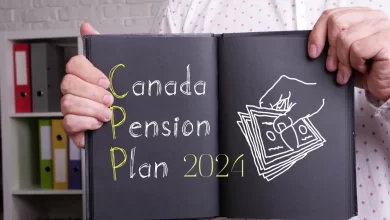
There are at least ten provinces and around three territories nestled in Canada. Under Canadian Sales Tax, there are three major parts:
About GST, HST and PST in Canada
- Goods and Services Tax (GST)
- Harmonized Sales Tax (HST)
- Provincial Sales Taxes (PST)
Under this guide, you will have a complete idea about Canadian sales tax.
Different Types of Canadian Sales Tax
Before you even start understanding provincial sales tax (PST) you need to understand the different types of taxes available in Canada. There are mainly three types of tax rates which are mentioned here.
1. Goods and Service Tax (GST)
The Goods and services tax (GST) is 5%, which is levied on most goods and services people buy in Canada. You need to charge and collect this tax no matter which province you are in unless you supply products under the zero-rated goods and services to the clients. Provinces that only end up charging GST and not PST include Alberta’s northwest territories and Yukon.
2. Harmonized Sales Tax (HST)
This tax was introduced in 1997, combining the provincial and federal goods and service tax. It is the consumption tax which is applicable only at the point of sale and adds to the percentage of the selling price of all the goods and services which you need to collect from your patrons.
The HST tax looks forward to combining GST and PST so that only one standard rate is promoted consistently, and it also aims to enhance the sales tax collection efficiency.
Also read: Who is eligible for the GST HST tax credit?
Businesses operating under the HST program would have to submit at least a lump sum of the tax liability to the Canada Revenue Agency instead of splitting the given tax into two parts: GST And PST. The Canada Revenue Agency must remit the appropriate amount so they can participate in the provinces for your business.
3. Provincial Sales Tax (PST)
The provincial sales tax (PST) is collected in the province, as a separate tax from the goods and service tax. However, some provinces don’t agree to participate in the just program, due to which these provinces have to collect both GST and PST. The provinces also charging provincial sales tax include British Columbia and Quebec.
How is GST affecting imports?
One of the essential elements of GST is that it is applicable in different situations. You, by now, have understood that GST applies to almost all the goods and services available in Canada. However, you might not know that the GST also applies to imports.
When importing the shipment to Canada, you must pay 5% GST and the total shipment amount. You must pay just 5% GST even if you import to a province having HST. At the same time, this is in addition to all the customs duties you would pay for your import.
Besides paying a GST on the value of the shipment, you also must pay 5% GST on the customs clearance fee, which would be charged based on the goods value you are importing. For instance, if the customs clearance fee is around $200, you would have to pay 5% extra GST, so you need to pay a total of $10 extra.
How can you get reimbursed for GST based on the imports?
One can quickly get reimbursed for the GST paid for the imports, provided they are not a resident importer and have registered for GST or HST. It is important to claim the input tax credit to do this on the GST return.
It is important to get reimbursement for the GST which is paid on the goods exported back to the United States of America, irrespective of the reason. Additionally, it is possible to receive reimbursement for all the GST you are paying on the imports if you are a nonresident importer and are not registered for GST or HST.
Learn More About – GST / HST Credit
It is crucial to have a Canadian purchaser who is already registered for GST or HST to get the reimbursement. At the same time, one must provide all the essential documents to the Canadian purchaser. They will claim the reimbursement on your behalf.
You would have a question at the back of your mind. Which tax rate do you have to charge the clients if they purchase from it can be anywhere from 0% to 15% of the tax rate. This is quite challenging. However, there are some factors that must be kept at the back of your mind while charging GST or HST to your clients.
- Firstly, you need to consider the type of supply, product, or service you sell.
- Should check out where the supplies are made and your client’s shipping address.
- You must check what the supply is made of, like the type of customers you sell the supplies to.
Wrapping up:
Learn more about Canadian sales tax, GST, HST and PST. The Goods and services tax (GST), Harmonized sales tax (HST) Provincial sales taxes (PST). You can connect with Accounting Mississauga Tax Experts to help you in the best possible way.



